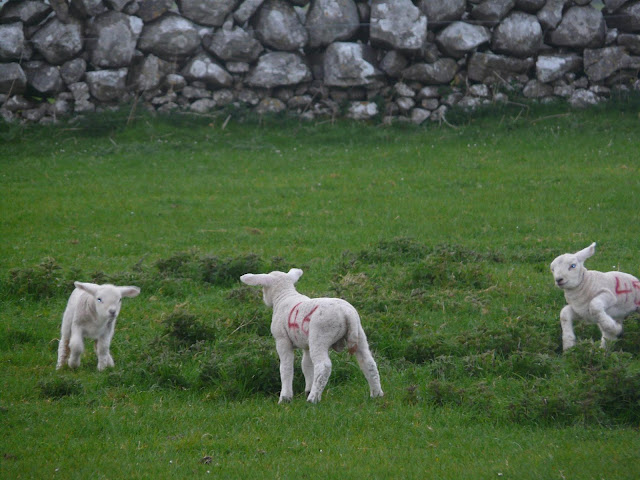In the hours before the ewe gives birth there are some noticeable signs that she is in labour. The ewe will be uneasy and show signs of sickness. No two ewes show the exact signs but there are many common traits. Its vital that you are aware of the signs so that if there is need for intervention you are on site.
Check your ewes every four hours so that if a ewe is having difficulty she is not left to struggle too long on her own. Some ewes can be quite dramatic in the hours up to the birth and some can be quiet relaxed.
I have seen a ewe that every year would clear the rest of the ewes out of the shed while she was in the process of lambing.
Signs of Lambing
- The ewes udder will be bagged out a few days or a week before she is about to give birth. It becomes bigger and harder the closer to birth.
- The teats will stand out about a day before lambing.
- The belly sinks also around the day before birth.
- The vulva will get pinker and more swelled.
- Hollow area appears in their flanks.
- When the lambing is close the ewe usually will not come to feed with the other ewes.
- The signs can be different depending on whether the ewe is lambing indoors or outdoors. If outdoors the ewe will move away from the rest of the flock as she will be looking for a sheltered place to give birth. She will perhaps go near a wall or tree. Out doors its easier to see the ewe separating away from the flock.
- Sometimes a ewe close to dropping the lamb will be bleating for a lamb our will show interest in other ewes lambs.
- She will move away from the flock and look rather perplexed.
- A clear liquid will appear like a string from their vulva.
- The water bag will then appear. There are two water bags, a larger one protecting the head and a smaller one lower down the back. The water bag may appear in two different ways once it exits the ewe. It may burst once it is released and hang like a membranous string or hang out not burst but a fluid filled bag.
- Lambing from the expulsion of the first water bag may take less than an hour.
- At this stage the ewe will be anxious and start scraping and stamping on the ground. She will be circling.
- She will perhaps grit her teeth.
- She will then lay down and start forcing.
- The closer to birth the more intense the forcing and straining.
- The ewe should have dropped the lamb within an our of the water bag appearing and longer and you may need to give her assistance.
- The sheep can deliver the lamb standing up or laying down.
- If the lamb is coming out correctly you will see its head and two front legs. When you see the nose and two front legs you can relax knowing all is going well.
- Even if the lamb is dropped perfectly the lamb may still need your assistance. If the lamb is born with the amniotic sac intact it could drown so you will need to burst it and remove the mucus from the lambs nose to allow it to breath.
- Some lambs are not quick off the mark and need encouragement taking their first breath. You can do this by tickling its nose with some straw rubbing its back or gently swinging the lamb by its back legs side to side.
- Watch to see that the ewe bonds with her lambing licking it and encouraging it to suck. The vigours licking is importent stimulation for the lamb and helps trigger hormones in the ewe that help accelerate the production of milk. Once you understand that there is a bond you can dry the lamb off some more and apply the iodine on the naval.
- If the ewe has had a difficult birth you should give her an antibiotic injection and watch out for vaginal prolapse in the hours after the birth. Speak with your vet if she suffers a prolapse which can be treated by fitting her with a harness.










ReplyDeleteI started on COPD Herbal treatment from Ultimate Life Clinic, the treatment worked incredibly for my lungs condition. I used the herbal treatment for almost 4 months, it reversed my COPD. My severe shortness of breath, dry cough, chest tightness gradually disappeared. Reach Ultimate Life Clinic via their website www.ultimatelifeclinic.com . I can breath much better and It feels comfortable!
Las Vegas' Wynn Casino - JTM Hub
ReplyDeleteCasino. Wynn herzamanindir is a $4 billion resort with 출장안마 four hotel towers https://septcasino.com/review/merit-casino/ with 5,750 rooms gri-go.com and suites. Each of the hotel towers includes a 20,000 square kadangpintar foot casino and a